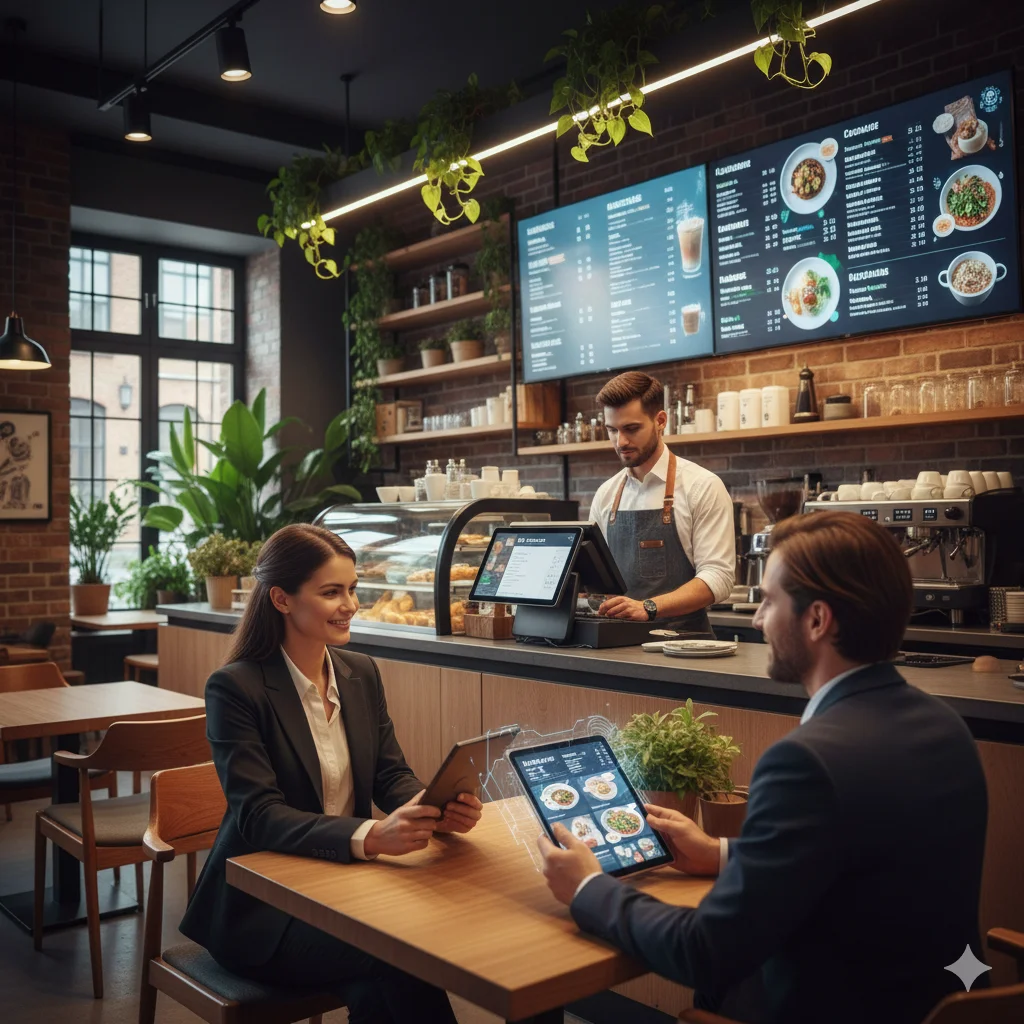In Malaysia’s dynamic F&B landscape, profitability is no longer determined solely by culinary excellence. POS systems for restaurants and cafes have emerged as strategic tools that streamline operations, minimize errors, and generate actionable insights for growth. While initially perceived as a cost, the ROI from modern POS systems is measurable across operational efficiency, revenue growth, and cost control. This article explores how cafés and restaurants can leverage POS technology to enhance profitability in 2025 and beyond.
-
Reduced Operational Errors = Lower Costs
Manual order entry and cash handling are significant sources of financial leakage. POS systems minimize human error through digital automation:
Benefits Include:
- Orders entered digitally → fewer miscommunications
- Automated payment processing → reduces cash discrepancies
- Tracking of refunds, voids, and discounts → prevents revenue leakage
Example: A Kuala Lumpur café reported a 15% reduction in order errors within three months of POS adoption.
-
Faster Service and Increased Table Turnover
Time efficiency directly translates into revenue. POS systems expedite operations by connecting front-of-house to kitchen workflows:
- Orders are transmitted instantly to the kitchen
- Cashless and QR payment processing accelerates checkout
- Wait staff spend more time upselling rather than entering orders
Case Example: A 20-table café in Petaling Jaya served an additional 15–20 customers daily during peak hours due to streamlined POS operations.
ROI Impact: Increased customer turnover leads to higher sales without additional staffing costs.
-
Inventory Optimization Reduces Wastage
Food costs constitute 25–40% of revenue in typical F&B operations. Integrating inventory management into a POS system reduces overstocking and spoilage:
Features of POS Inventory Management:
- Real-time stock tracking per dish
- Automatic deduction of ingredients per order
- Low-stock alerts to prevent sudden shortages
- Purchase reports for smarter ordering
ROI Impact: Lower cost of goods sold (COGS) and reduced spoilage improve net profit margins significantly (Xero, 2021).
-
Data-Driven Decision Making
POS systems provide analytics that inform strategic decisions, replacing guesswork:
- Sales reports reveal high-performing menu items
- Customer behavior insights track loyalty and frequency
- Staff performance metrics guide rewards and accountability
- Peak hour analysis optimizes shift scheduling
Example: A café identified iced lattes as high-demand between 2–5 PM and launched a “happy hour” promotion, increasing sales by 12% (StoreHub, 2023).
ROI Impact: Data-driven decisions enhance profitability and reduce operational inefficiencies.
-
Integration With Online Orders & Delivery Platforms
With platforms like GrabFood, FoodPanda, and ShopeeFood dominating the Malaysian market, POS integration ensures seamless order management:
- Online orders sync automatically to POS and kitchen
- Inventory adjusts in real-time per order
- Customers receive faster, error-free service
Example: A restaurant processing 50 online orders daily saved the equivalent of one full-time staff member’s salary by automating entry.
ROI Impact: New revenue channels and reduced labor costs contribute directly to ROI (Lightspeed POS, 2022).
-
Staff Productivity and Labor Optimization
Labor efficiency is critical in F&B profitability. POS systems support workforce optimization:
- Role-based permissions streamline task allocation
- Staff performance tracking incentivizes productivity
- User-friendly interfaces reduce training time
ROI Impact: Reduced payroll costs and higher output per employee translate into measurable financial gains.
-
Calculating POS ROI: A Practical Example
Consider a medium-sized Kuala Lumpur café:
Financial Gains:
- Reduced wastage = RM12,000/year
- Faster service (higher turnover) = RM8,000/year
- Online delivery integration = RM6,000/year
- Total Gains: RM26,000/year
POS Costs:
- Software subscription = RM4,000/year
- Hardware (tablet, printer, terminal amortized) = RM1,000/year
- Staff training = RM1,000/year
- Total Costs: RM6,000/year
ROI Calculation:
ROI = (Gains – Costs) ÷ Costs × 100
ROI = (26,000 – 6,000) ÷ 6,000 × 100 = 333%
The POS investment pays for itself multiple times, driving profits far beyond initial costs.
-
Hidden Benefits That Amplify ROI
Beyond immediate financial gains, POS systems offer intangible advantages:
- Enhanced customer satisfaction → repeat business and positive reviews
- Strengthened brand reputation through modernized operations
- Scalability → easier expansion into multiple outlets
- Fraud prevention → improved accountability
Conclusion: POS Systems as Profit Catalysts
For Malaysian cafés and restaurants, POS systems are not mere conveniences—they are critical profit drivers. By reducing errors, optimizing inventory, accelerating service, enabling online integration, and empowering staff, POS technology generates ROI ranging from 200–400% in the first year alone.
In Summary:
- POS = Operational Efficiency
- Efficiency = Revenue Growth
- Revenue Growth = Higher ROI
Restaurants relying on manual processes risk leaving significant revenue untapped. Adopting a modern POS system is the most strategic investment for growth, sustainability, and profitability in 2025.





